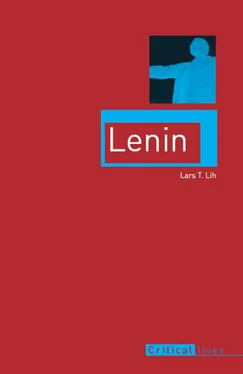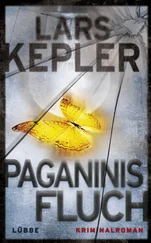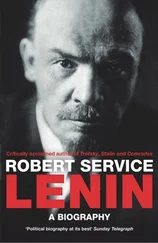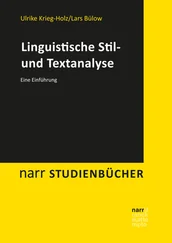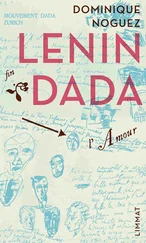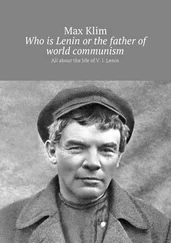Lars Lih - Lenin
Здесь есть возможность читать онлайн «Lars Lih - Lenin» весь текст электронной книги совершенно бесплатно (целиком полную версию без сокращений). В некоторых случаях можно слушать аудио, скачать через торрент в формате fb2 и присутствует краткое содержание. Город: London, Год выпуска: 2012, ISBN: 2012, Издательство: Reaktion Books, Жанр: Биографии и Мемуары, История, на английском языке. Описание произведения, (предисловие) а так же отзывы посетителей доступны на портале библиотеки ЛибКат.
- Название:Lenin
- Автор:
- Издательство:Reaktion Books
- Жанр:
- Год:2012
- Город:London
- ISBN:9781780230030
- Рейтинг книги:3 / 5. Голосов: 1
-
Избранное:Добавить в избранное
- Отзывы:
-
Ваша оценка:
- 60
- 1
- 2
- 3
- 4
- 5
Lenin: краткое содержание, описание и аннотация
Предлагаем к чтению аннотацию, описание, краткое содержание или предисловие (зависит от того, что написал сам автор книги «Lenin»). Если вы не нашли необходимую информацию о книге — напишите в комментариях, мы постараемся отыскать её.
Lenin — читать онлайн бесплатно полную книгу (весь текст) целиком
Ниже представлен текст книги, разбитый по страницам. Система сохранения места последней прочитанной страницы, позволяет с удобством читать онлайн бесплатно книгу «Lenin», без необходимости каждый раз заново искать на чём Вы остановились. Поставьте закладку, и сможете в любой момент перейти на страницу, на которой закончили чтение.
Интервал:
Закладка:
There you are – a little bit of lyric poetry… 20
Lenin’s main political achievement during his exile was working out an ambitious plan for realizing his dream of a national underground organization that would be ‘a political factor of the highest order’. The most detailed exposition of this plan came a few years later in his famous book What Is to Be Done? (1902). We must proceed carefully, because latter-day readers of What Is to Be Done? have removed Lenin’s book from its context and thereby fundamentally distorted its spirit and impact. According to the standard textbook interpretation, Lenin devised an innovative plan of party organization that consciously rejected the model of Western socialist parties such as the German SPD in favour of an updated version of the conspiratorial underground of earlier populist revolutionaries such as Narodnaya volya . Driving his new scheme was a compulsive ‘worry about workers’, that is, Lenin’s conviction that workers were inherently reformist and therefore would not, even could not spontaneously support a revolutionary party. He therefore tried to ensure that the party was composed solely of hardened revolutionary intellectuals – or so we are told.
This picture of a dour, jaded, even cynical Lenin stands in striking contrast to the actual romanticism of his heroic scenario. Lenin’s vision of party organization was not his personal innovation but rather a systemization of methods collectively worked out by a whole generation of Social Democratic praktiki . Through trial and error these anonymous activists tried to import the SPD strategy – inspiring the masses through party campaigns – into the hostile environment of repressive absolutism. His whole scheme was based not on an anxious worry about workers, but on an enthusiastic confidence that the workers would provide crucial support.
Lenin’s heroic scenario had its individual features but its basic theme of leadership, as embodied by an inspired agitator or propagandist spreading the word and raising consciousness, was one that excited many people. In 1906, in his famous novel Mother , the left-wing writer Maxim Gorky gave narrative form to this collective dream so effectively that his book later became a Soviet icon and was acclaimed as the precursor of ‘socialist realism’. In 1917, on the eve of the Bolshevik revolution, Gorky’s novel was summarized for American readers by Moissaye Olgin, an émigré with personal experience in the Russian underground. Olgin’s summary reveals not so much what the underground was as what it wanted to be. Recall Lenin’s ambitious claims for the impact of socialist ‘leaflets’ or listki during the 1896 strikes, and compare them to Olgin’s summary of Gorky ( listki is here translated as ‘papers’):
Soon the streets of the suburb are strewn with ‘papers’ written with blue ink (hectographically reproduced proclamations). The ‘papers’ venomously criticize the system in the factory, they tell about labour strikes in Petersburg and Southern Russia, they call the workingmen to unite in defence of their interests. The ‘papers’ are read and commented upon. The older folks are morose, the younger are delighted, the majority have no confidence in the strength of the workingmen, yet they know the ‘papers’ are well meant; the papers speak about the sufferings of the working people; they are telling ‘the truth’.
A bond of sympathy is established between the secret organization and the bulk of the toilers. The ‘papers’ appear regularly; they have become necessary to the population. When they fail to appear for a whole week, people are uneasy. None of the ‘rank and file’ knows the address or the members of the organization, yet its influence grows. 21
The organizational goal of the SPD-inspired underground is expressed by the last sentence: ‘None of the “rank and file” knows the address or the members of the organization, yet its influence grows.’ Is this possible? Can a secret organization really have growing mass influence? The solution to this problem worked out by a generation of Social Democratic activists can be called the threads strategy , as set forth in 1906 by M. Liadov, a Bolshevik who broke with Lenin some years later. According to Liadov the challenge facing the underground was ‘to expand as much as possible the framework of a secret organization, and, while preserving intact the konspiratsiia character of the [party] staff, connect it with a whole series of threads to the mass’. 22
The word konspiratsiia is key for understanding the logic of the threads strategy. It does not mean ‘conspiracy’ (in Russian, zagovor ). The old populist underground was based on conspiracy – that is, a restrictive secret organization aimed at a political overthrow, a high-level assassination or the like. This kind of underground was therefore only a means for carrying out the goal of a successful conspiracy. Thus conspiracy was required for any revolutionary overthrow of autocracy that lacked mass organization. In contrast, konspiratsiia was required for any revolutionary overthrow of autocracy that included mass organization. Although konspiratsiia was derived from the French word conspiration , it had acquired in Russia the strongly contrasted meaning of all the practical rules of conduct needed to elude the police, even while preserving the threads connecting the organization to a wider community. Konspiratsiia can be defined as ‘the fine art of not getting arrested’. In contrast to a conspiracy, konspiratsiia was only a means toward an end, namely, keeping the underground organization and its threads in existence.
In a dispute with veteran populist Petr Lavrov that Lenin conducted during his Siberian exile, Lenin energetically rejected the strategy of conspiracy and associated methods such as individual terror. Old-timers like Lavrov automatically equated anti-tsarist political struggle with bomb-throwing conspiracies. They therefore assumed that the Social Democrats, who rejected conspiracy, were not serious about achieving political freedom by revolutionary means. But there was a real alternative to old-fashioned conspiracy (responded Lenin): an underground organization connected by a variety of threads to a mass constituency, one that manages to stay in existence through strict observance of the rules of konspiratsiia . 23
The viability of the konspiratsiia underground was crucial for the success of Lenin’s ‘other way’. The class leadership evoked by his heroic scenario required an underground organization that both eluded police and maintained contact with the workers. No wonder Lenin spent so much thought on the details of how this could be accomplished – they were the nuts and bolts of a dream.
Anyone who argued for the workability of the threads strategy needed to make some very optimistic assumptions. Typically, Lenin made these assumptions with gusto and scorned the sceptics and ‘philistines’ who had less exalted expectations. One such assumption was the existence of a supportive worker milieu that would pick up the threads thrown out by the konspiratsiia underground. When the revolutionaries of the 1870s went to the people, the puzzled peasants promptly turned these strange beings over to the police. When the praktiki of the 1890s went to the workers, they gradually found enough sympathy to allow them to operate. The Social Democrats were no longer alien beings with incomprehensible schemes, but familiar social types with a relevant (even if not always accepted) message. Without the supportive worker milieu, all the methods that the praktiki had painfully elaborated for foiling the police would have meant nothing.
Читать дальшеИнтервал:
Закладка:
Похожие книги на «Lenin»
Представляем Вашему вниманию похожие книги на «Lenin» списком для выбора. Мы отобрали схожую по названию и смыслу литературу в надежде предоставить читателям больше вариантов отыскать новые, интересные, ещё непрочитанные произведения.
Обсуждение, отзывы о книге «Lenin» и просто собственные мнения читателей. Оставьте ваши комментарии, напишите, что Вы думаете о произведении, его смысле или главных героях. Укажите что конкретно понравилось, а что нет, и почему Вы так считаете.
